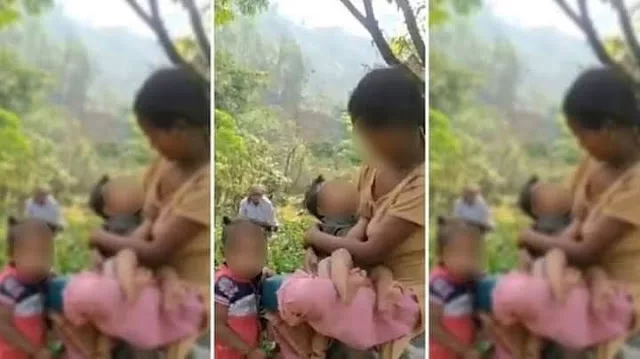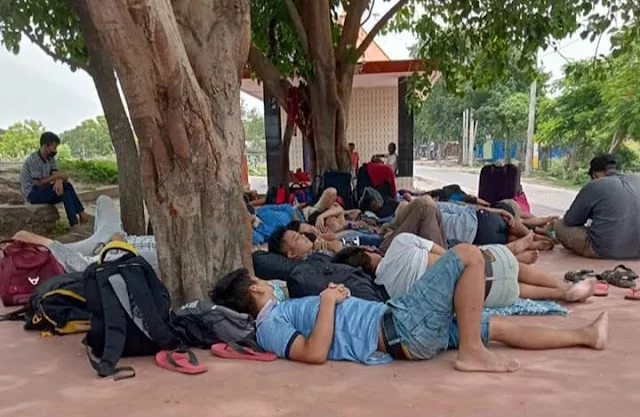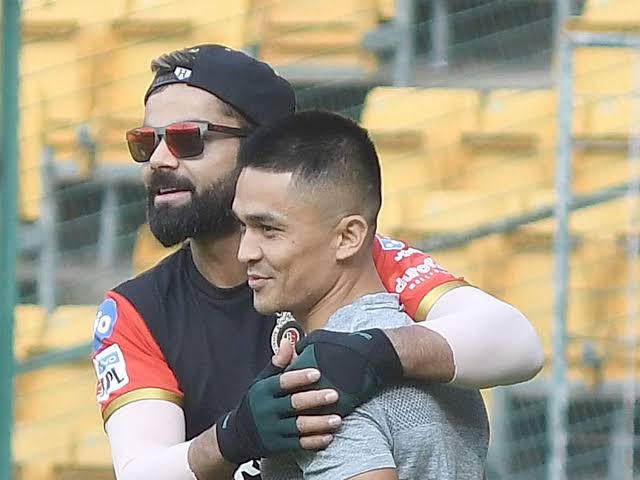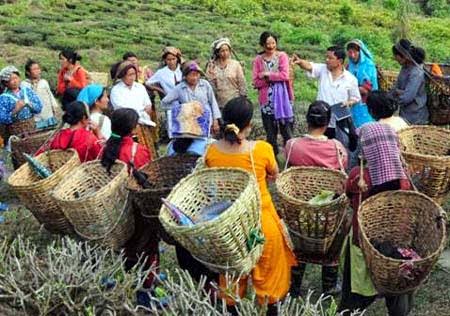Of all the secessionist movements that have rocked post independence India, the Gorkhaland movement has perhaps been the longest drawn, most volatile and inconclusive. What began with a demand of recognition of the linguistic and ethno-minority status of the Gorkhas or ‘Indian Nepalese’ by the Hillmen’s Association as early as in 1907, and then again in 1917, 1930 and 1934, has seen several changes in leadership, and subsequently in stances, policies and demands. The All India Gorkha League (AIGL) demanded a representation in the government, followed by a demand for a separate state in 1946. In 1947 the undivided Communist Party of India also demanded a separate state of ‘Gorkhastan’, though the demand was later modified to autonomy within the state of Bengal. 1980 onwards, there have been several demands for a separate state of Gorkhaland outside West Bengal, first by the Pranta Parishad, and then by Subhas Ghisingh’s Gorkha National Liberation Front (GNLF), and now by the Gorkha Janmukti Morcha (GJM), a party formed in 2007 by Bimal Gurung, a former GNLF member.
 |
| Novel on Gorkhaland Written By a Nepali in Bengali – NUN CHA |
Interestingly enough, these 35 years of agitation have hardly inspired any major fictional work (Kiran Desai’s Booker Prize winning novel The Inheritance of Loss uses the Gorkhaland movement only as a partial backdrop). This void has been finally fulfilled by the debutant novelist Bimal Lama’s novel Nun-Cha or Salty Tea (Calcutta: Saptarshi Prakashan, 2012), which speaks of the dreams and disillusionments of the marginal small time farmers and tea garden workers in the wake of the Gorkhaland movement (Nun Cha or salty tea is the poor hill-man’s everyday drink, a spoonful of sugar is a luxury he can ill afford). One of the most talked about works in recent Bengali literature, Lama’s novel is unique for a number of reasons. Firstly, it is a novel in Bengali written by a Nepalese. Secondly, this Bengali novel is about a movement which seeks to establish the Gorkha or Nepalese identity of a people who consider themselves marginalized primarily by the Bengalis. Born in the late 60s, Lama spent his childhood and youth shuttling between the tea plantation ‘bustee’ and the factory workers’ colony in Chinsurah, in the industrial belt of suburban Calcutta. An insider to the violence – physical as well as psychological – spawned by the Gorkhaland movement, Lama is unabashedly critical of the ruthless manipulation of the unsuspecting Nepalese youth by the GNLF leadership as well as the State machinery. He questions the very foundation of the Gorkhaland movement – touted as the struggle for the establishment of the ‘true’ Gorkha identity – by questioning whether there at all exists a single inclusive Gorkha identity to begin with.
Nun ChaSet in the early 1980s which saw the beginnings of a long period of instability and unrest in the Darjeeling hills, the novel traces the epical journey of the protagonist Urgen, an insignificant farmer cum vegetable seller from Dhanmandhura, one of the numerous tiny hamlets dotting the green slopes of the Darjeeling hills, from invisibility to prominence, charting his dreams and disappointments. Like many young men and women of the sleepy village close to the Singtam tea eastate, Urgen’s only ambition had been to be a wholesaler of the fresh green vegetables that he hauled up to the weekend market at Darjeeling Chowkbazar every single week of his adult life. And then the movement for a separate land for the Gorkhas starts taking shape. Life in the sleepy hamlet, uneventful except when interrupted occasionally by sudden bear attacks, annual communal feasts, elaborate ghost busting ceremonies, or drinking competitions and drunken brawls, remains untouched by the initial stirrings in the town, marked by distant fires in the hills. No newspapers reach Dhanmandhura, Shubash Ghisingh makes an appearance in the form of a hazy photograph in a torn and soggy newspaper wrapping of piece of bread or a chunk of meat, and finds a place in the village elder Gajey Jhankri’s homespun ‘library’ consisting of a few scrapbooks filled with similar chance findings.
Along with Ghisingh, the terms Gorkha and Gorkhaland too enter Urgen’s life quite by chance. Urgen, as the GNLF leader Tara Daju points out, held a unique strategic position in the three tier hill structure – he hails from a village within the tea estates, but also has access to the wholesale market at Pulbazar (midway between the plantations and town, where the farmers gather every week with their fresh produce), and the retail market in the hill town of Darjeeling. During one of his weekly visits to Darjeeling, he is singled out by the leaders and assigned the task of campaigning and recruiting for their cause. Hesitant at first, the naive youth gradually yields to the fiery speeches and idealism of the leaders. Soon Urgen and his friends Milan, Param, Kundan, Pemba and their families dream of Gorkhaland a land of their own. It is a magical term, egalitarian and inclusive, which promises to remove all barriers between the strictly observed social categories and sub castes – the Rais, Limbus, Tamangs, Kamis, Damais, Gurungs, Magars, Chhetris – and give them one single identity, that of the Gorkha, the brave warrior and worshipper of Lord Gorakhnath. Even the village outcast, the ‘fallen’ Jashomati, finds her place in this wider canvas; she becomes ‘Jashudidi’, her humble cottage at the edge of the village becomes the meeting place of the newly initiated Gorkhas. Urgen suddenly finds himself sucked into the middle of violent political action; plots, counterplots, attacks and counterattacks rule his world. He steadily grows in stature, organizing and leading his people, opposing the powerful trade union leader-trader Bijoi, deciding the fates of refugees from CPM dominated villages, bargaining with Party leaders for arms, training and protection. At the same time his long cherished dream begins to materialize – he becomes a wholesaler, and then a shop-owner in Darjeeling, as the once powerful Bijoi recedes into the background, and is finally murdered.
However, his success, both as a leader and as a trader, is followed by personal tragedy. First, Dolma, a Tibetan young woman and Urgen’s well wisher, is severely beaten up because she had warned him of an imminent attack. Next, his village is burnt down by CPIM supporters, and the homeless villagers have to start life afresh in a makeshift refugee colony. Urgen’s fiancée Juny, the doe-eyed daughter of the village tailor, is brutally gang raped by a group of CRPF personnel barging in at night in search of Urgen. She gets pregnant, is advised abortion by all including her fiancé, but refuses to give up her child. Urgen and Juny are temporarily estranged; she chooses to fight her own battle, alone.
As Urgen’s involvement with the movement increases, to his dismay he finds that in their quest for one single identity, and in their efforts to establish that as their only identity, they have overlooked all other affiliations that have existed for years. Urgen gradually realizes how the entire community has been split, and how the powers manipulated and exploited them by playing one section against the other so that their struggle is not against the State, instead it is the State which is making them fight their own brothers, fellow Nepalese, affiliated to the Communist Party led tea workers’ trade union. He is bitterly disappointed and disillusioned at the shortsightedness and moral failure of the men in power when, after the Kalimpong firings, the movement suffers a setback under State aided violence unleashed on the agitators and supporters alike. All hopes come to an end with the failed tripartite meeting between the State, Centre and Subhas Ghisingh, with Ghisingh agreeing upon an autonomous Hill Council. The novel ends with a drunken Urgen on the road, walking unsteadily towards the hospital when Juny lay waiting for him, writhing in labour. He gives his comrades a torn ‘Gorkhaland’ sticker for safekeeping, as he proceeds to sign the hospital form. Ghisingh’s signature at the tripartite meeting temporarily sealing the fate of the Gorkhaland movement coincides with Urgen’s decision to sign as the father of Juny’s unborn child, and assuming responsibility for an unknown and uncertain future.
Central to the quest for Gorkha identity and its critiquing in Nun Cha lies Lama’s successful narrative strategy of merging the real and the symbolic, the private and the public. One single metaphor that forms the leitmotif of the novel is that of journeys – uphill and down, across meadows and streams, through the maze of tea bushes and bamboo groves, through burial grounds and vegetable patches, through broad arterial roads and narrow winding by lanes. In fact, Urgen’s epical and adventurous journey from his sleepy native village to the turbulent streets of Darjeeling traversing the three tiers of hill life actually symbolizes the entire causal sequence of the Gorkhaland movement: years of neglect and poverty leading to popular discontent; strategic politicization of that discontent; and finally its actualization in violent action; and finally, compromise. The novel begins with the timid and shy Urgen following the rest of his group to the vegetable market. On their return, he takes lead in a bear hunt. His meetings with Juny, hesitant at first, then confident, are all on the road. Meetings with the GNLF leaders and comrades, snatches of information and rumour, confrontations with CPIM leaders and workers, with the Police and RPF personnel, all take place while Urgen is moving. It is at the end of such a journey that he finds himself hoisted on a platform, addressing a crowd eager to listen to the untrained speeches of a ‘kode’ or country bumpkin. The novel ends with Urgen on the road once again, shuffling towards the hospital, alone and unsure, not unlike the hesitant Urgen that we first meet.
The women in Urgen’s life, too, perform a representative symbolic function. While his mother and younger sister Sushila represent tradition and rootedness, Jashomati, the enigmatic femme fatale turned ‘godmother of the movement’, is a deviation from tradition. The three women who love Urgen – Dolma, Juny and Prakriti – belong to the three tiers, and together represent the spirit of the movement. The young Tibetan refugee Dolma, from the middle tier of Pulbazar, a quiet sympathizer of Urgen’s cause, almost sacrifices her own life to save his. Prakriti – the beautiful, self-effacing city-bred hotel owner from Darjeeling is a source of strength and stability. Juny – pure, virginal, elemental and exquisitely beautiful in Urgen’s eyes, is the doe-eyed beauty from the ‘chia kaman’ or tea gardens. She embodies the fierce passion, the unbreakable will power and self-negating love. The Urgen- Juny relationship too, with its promises, hopes, disappointments, and commitment, acts as a strong metaphor for the movement, its failure, and inconclusiveness.
Urgen’s story is a story of naïveté as it is of deception and manipulation; it is a tale of trust as much as of betrayal; it speaks of dreams and the shattering of those very dreams, of promises not kept, of hopes buried under the rubble of burnt down homes, of lives cut short abruptly. But the complexity of Lama’s debut novel arises from the complexity of identity of the community it minutely depicts in the microcosmic world of Danmandhura. In the beginning the small village community, segmented by a strictly observed hierarchy of castes and sub castes along with a rigid system of inclusion and exclusion, manifests the fissures within the class and caste conscious Indian-Nepalese community. But once the community comes together for the greater cause of Gorkhaland, trying to erase the deep rooted differences, biases, and prejudices for a promised homeland, there appears another, much more threatening division, a division imposed from outside. This division splits their Nepalese identity into two irreconcilable halves: the “MaCPa” and “GoRaMuMo”, local names for members of the CPIM led trade union in the tea plantations, and the Gorkha Rashtriya Mukti Morcha (GNLF) members respectively. The violence of the movement arises out of the clash between these two identities, subverting the essential ethnic identity of the group, and diluting the strength of the movement. Lama’s novel thus critiques the Gorkhaland movement by boldly exposing the fissures within the idealized Gorkha figure, and holding this fractured identity responsible for an unfinished dream called Gorkhaland.
Source: northeastreview





